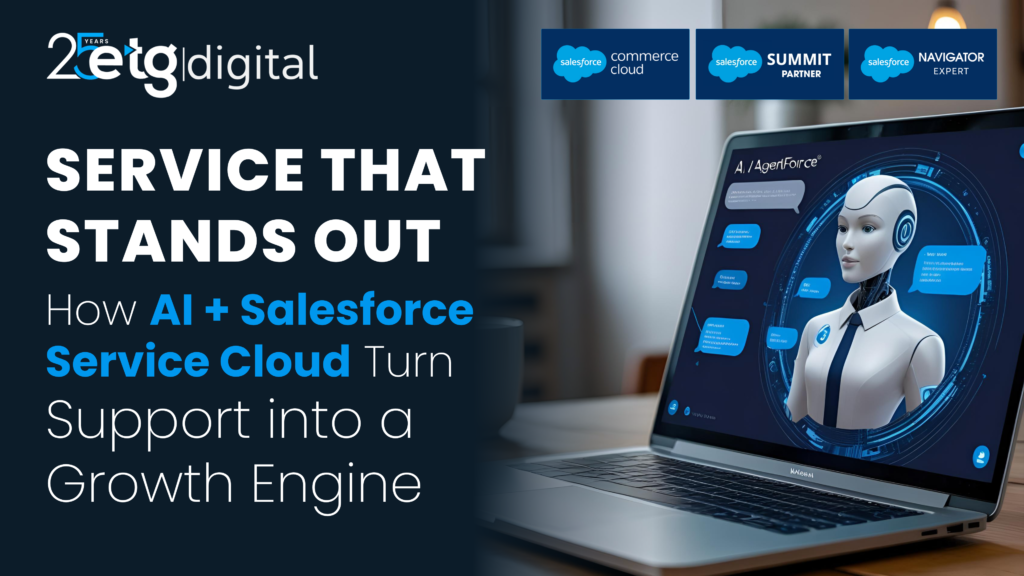
“Customers don’t call to be heard. They call to be helped — fast, accurately, and with context.”
Why Your Contact Center Hurts (Even When SLAs Look Fine)
Your team is talented. Your tech stack is…big. Yet customers still repeat themselves, cases ping-pong, and supervisors only see the full picture after the spike hits. Agents burn out on copy-paste busywork while high-value issues wait.
- Reps juggle tabs instead of helping people
- Knowledge hides in silos and Slack threads
- Coaching is reactive, not real time
- Service is treated like a cost to minimize — not a growth lever
This isn’t a people problem. It’s a systems and roles problem: the work is still designed for yesterday’s contact center.
What The Best Are Doing Differently
1
AI + Humans, together, by design.
The most effective organizations don’t replace reps — they augment them. Agentic AI handles narrow, repetitive steps; humans take on the strategic, emotional, and complex — with AI copilots surfacing knowledge, next-best actions, and summaries in-flow.
2
Unified, first-party data as the foundation.
When purchase history, service notes, preferences, and product usage are unified, reps know the customer before they say hello, and AI can actually personalize — not guess.
3
Sub-second signal to action.
Pair Service Cloud with Data Cloud’s sub-second pipeline (real-time ingest, identity, insights, and actions), and you move from reactive triage to proactive experience design.
4
Results you can feel.
Salesforce’s benchmarks show measurable lift when AI augments reps (faster resolutions, higher first-contact resolution, and less burnout) when supported by unified data and real-time guidance.
Why Timing Compounds Advantage
AI learns from your conversations and your resolutions. Teams that operationalize AI-assisted service now will:
- Train better models on their own data
- Build stronger coaching loops for supervisors
- Lock in playbooks competitors can’t easily copy
Waiting isn’t neutral — it’s falling behind.
ETG is opening only 5 Service Cloud Readiness Audits this quarter (deep-dive on roles, data, and quick-win automations). First come, first served.
What “AI Inside Service” Feels Like (For Everyone)
A customer writes in: “My device keeps dropping Wi-Fi.”
AI agent verifies warranty + known issues, runs a quick triage, and proposes two fixes. Conversation sentiment turns frustrated; the case auto-routes to a human with a one-click summary and suggested next steps. Rep resolves and, based on usage + history, offers a relevant accessory — accepted.
A supervisor starts the shift:
A real-time dashboard shows spikes by topic, channels, and sentiment; coaching cards appear for two new reps struggling on policy exceptions; one-click publishes a KB article, which AI agents surface across chat and messaging.
The ops leader reviews the week:
First-contact resolution up, escalations down, and fewer after-hours calls because real-time actions notified customers before they asked.
How Roles Actually Change (Without the Hype)
Salesforce’s guidance is clear: think “autonomy slider” — AI augments first, then gradually takes on more scope under human oversight. Here’s how that maps to typical service roles:
- High-complexity support (TAMs, escalation engineers): Stay human-led; AI accelerates root-cause, surfaces knowledge, and drafts comms.
- Relationship-centric roles (retention, claims, billing disputes): Evolve into proactive advisors with journey views, next-best-action, and personalized offers.
- Transactional centers (order status, returns): See the largest automation shift; humans focus on exceptions and empathy-required moments.
1
Role & Work Inventory
Map the “moments that matter” by role. Identify what to automate, what to augment, and what to protect as human-only. (Our templates accelerate this.)
2
Unify First-Party Data (the right way)
Turn customer history, products, and policies into a single, queryable truth — the fuel for accurate personalization and faster FCR.
3
Sub-Second Signals → Actions
Wire real-time ingestion and actions for things that move KPIs (pre-emptive delay comms, intelligent triage, proactive renewals).
4
Agentforce in the Flow
Deploy AI agents for narrow, high-volume tasks; give reps copilots for summaries, next-best steps, and KB drafting; give supervisors live coaching surfaces.
5
Governance, Guardrails, and Cost Control
We set brand-safe prompts, approval workflows, and usage monitoring so AI lifts outcomes without runaway spend (and we phase real time where it actually pays).
Quick Wins You Can Ship in 45 Days
- AI Summaries + Suggested Replies inside the console
- Smart Routing using live sentiment and customer tier
- Self-Service Playbooks for top 10 intents (chat + messaging)
- KB Uplift: auto-drafts for gaps spotted in real time
- Supervisor Live Boards with topic/sentiment spikes and coaching cues
(These lean on native Service Cloud + Agentforce; we add the data plumbing and guardrails.)
Interactive Lead Magnets (Exclusive)
Get instant access to our top three resources designed to accelerate your AI strategy:
- Service Cloud ROI Calculator — quantify impact on CSAT, FCR, and cost-to-serve
- AI Agent Use-Case Library (25 real playbooks) — mapped by role and KPI
- Supervisor Dashboard Checklist — what to watch and why
Limited to the first 50 downloads.
FAQs Leaders Actually Ask
Will AI replace our reps?
No. It removes drudgery and amplifies judgment. Humans still handle ambiguity, emotion, and exceptions — with AI doing the heavy lifting.
Where do we start?
Pick 2–3 “money moments” (e.g., reduce AHT for top intents, lift FCR, pre-empt delivery tickets) and build from there — not a big-bang rewrite.
Do we need Data Cloud on day one?
Not always. Start with Service Cloud + Agentforce use cases, then add sub-second data where real-time truly shifts outcomes.
Ready to Turn Service Into a Strategic Advantage?
You can’t spreadsheet your way into modern service. You need an AI-assisted, data-unified system designed around humans.

